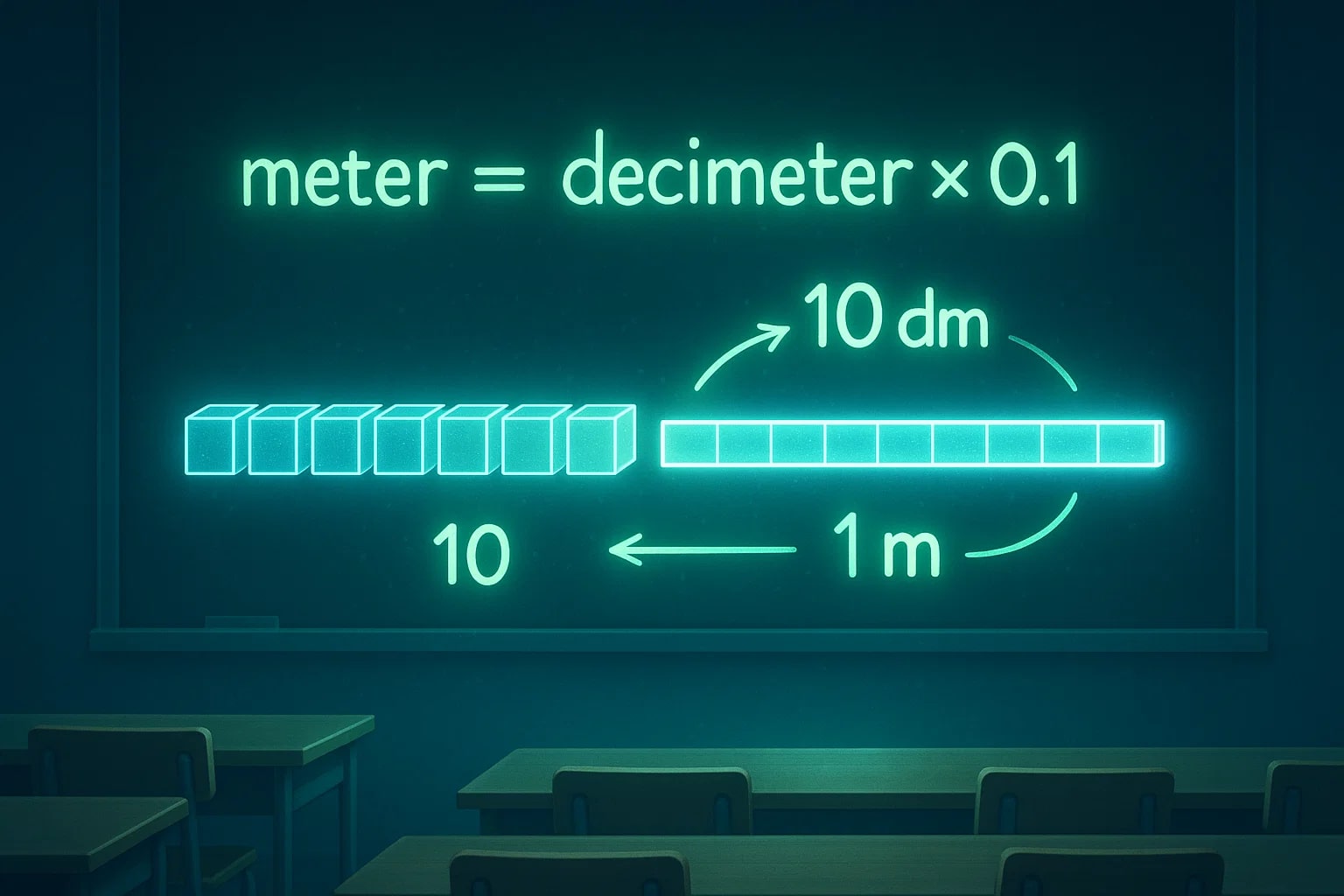decimeter to meter – How to convert dm to m
The conversion from decimeter to meter is one of the simplest within the metric system. Both units belong to the same base-10 structure, which makes the calculation straightforward. While decimeters are less common in daily speech, meters are the standard reference in science, construction, and everyday measurements. Learning how to convert dm to m is essential in school, labs, and technical fields.

What is a Decimeter (dm)?
A decimeter equals one tenth of a meter:
1 dm = 0.1 m.
It also equals 10 centimeters, making it useful as a stepping stone unit in mathematics and scientific problems.
What is a Meter (m)?
The meter is the SI base unit of length. It was originally tied to Earth’s meridian but today is defined by the distance light travels in a fraction of a second. It is the foundation of modern measurement, used globally in science, trade, and daily life.
How to Convert dm to m
The formula is:
meter = decimeter × 0.1
For example, let’s convert 15 dm into meters:
meter = 15 × 0.1 = 1.5 m
So, 15 dm = 1.5 m.
For further calculations, see the Length Converter or explore the full Conversion Tools for more unit changes.
Do you know?
-
The decimeter is rarely used in everyday language, but it appears in educational exercises to train students in metric scaling.
-
The meter became the world’s base length unit in 1960 with the adoption of the International System of Units (SI).
-
In fluid dynamics, decimeters sometimes appear in calculations, especially when describing volumes like cubic decimeters (equivalent to liters).
-
Historical measuring sticks often included both decimeters and meters, making it easier to switch between smaller and larger scales.
A Role in Education and Science
In many classrooms, the decimeter is introduced as a “bridge” between centimeters and meters. Students learn that 10 decimeters make 1 meter, reinforcing the power of decimal-based measurement. This step builds understanding that later applies in geometry, physics, and engineering.
Meters, however, dominate both daily and professional life. From construction plans to Olympic track lengths, the meter is the universal unit of reference. The simplicity of converting between decimeters and meters demonstrates why the metric system has become the global standard.

From Small Units to Global Standards
The conversion from decimeter to meter might look simple, but it reflects the logic and efficiency of the metric system. Decimeters help in teaching and certain calculations, while meters provide the universal reference that guides science and everyday measurement.
With just one quick formula, you can scale seamlessly between them—linking classroom exercises with real-world applications.

